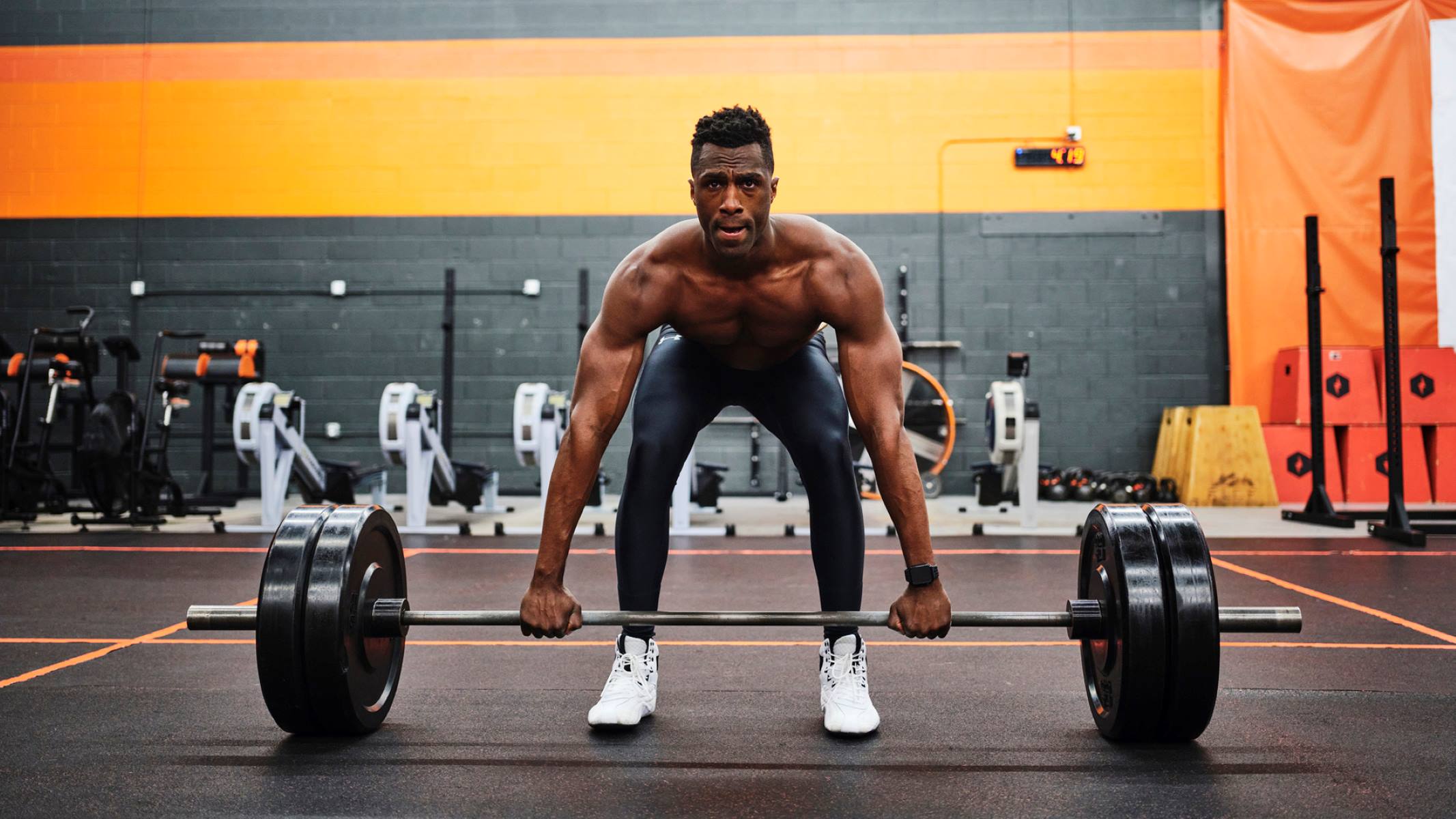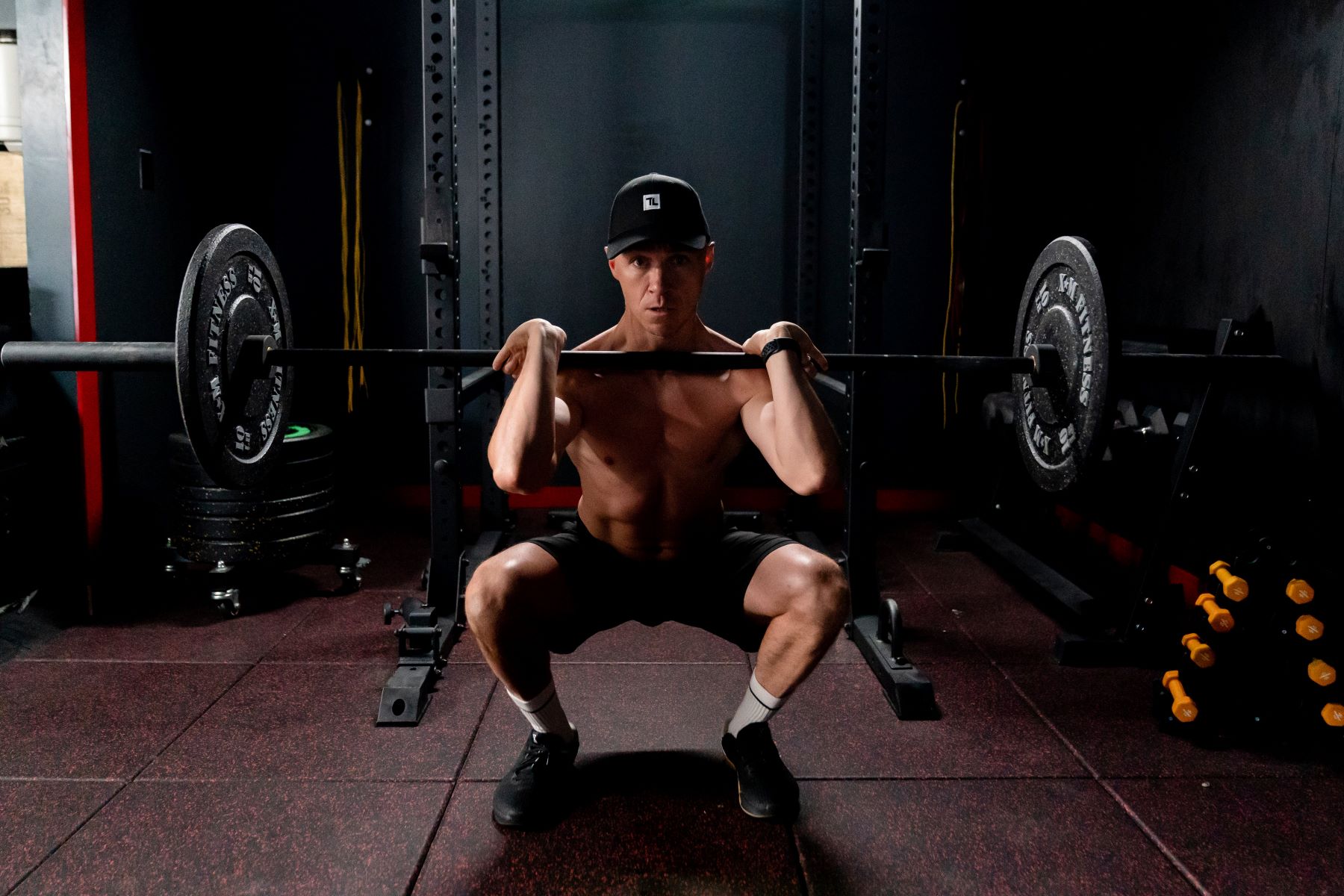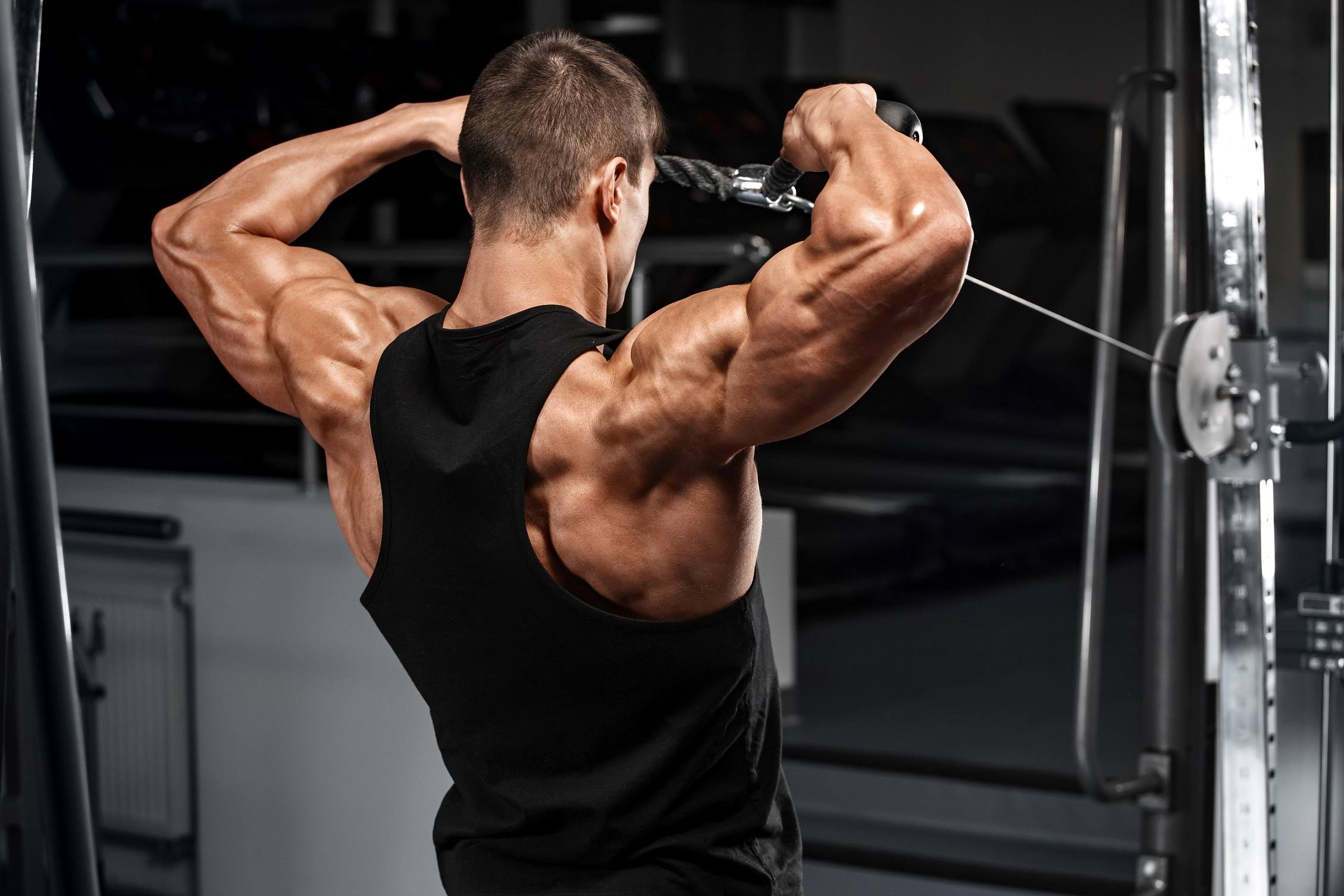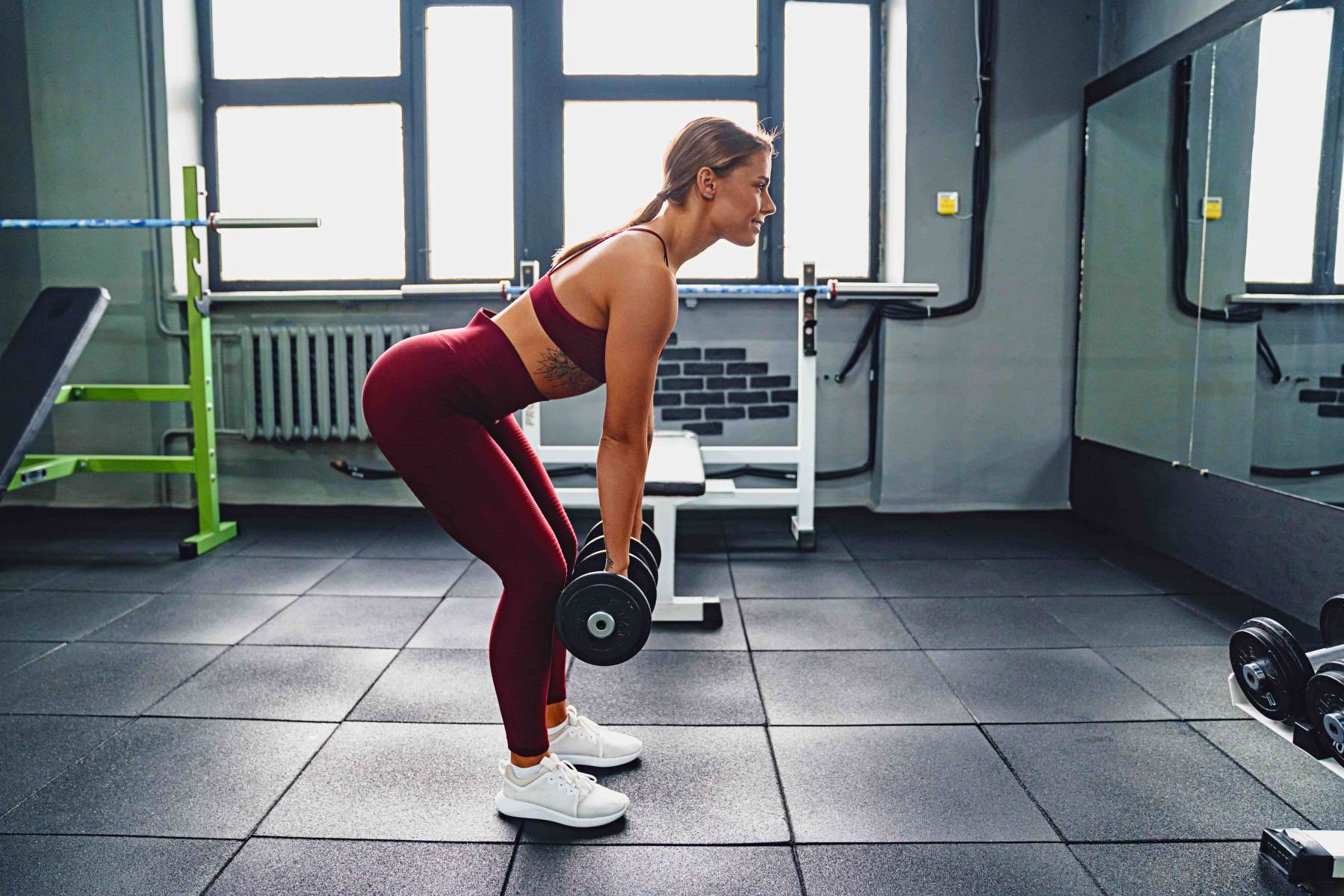

Featured
What Is A Compound Workout
Modified: March 1, 2024
Discover the benefits of compound workouts and how they can help you achieve your fitness goals. Get featured with this effective training method.
What Is a Compound Workout?
A compound workout is a type of exercise routine that involves movements that engage multiple muscle groups and joints simultaneously. Unlike isolation exercises that focus on a specific muscle or muscle group, compound exercises target multiple areas of the body at the same time. These exercises often involve performing complex movements that require coordination, balance, and stability.
The concept behind compound workouts is rooted in the idea of functional movements. These are movements we perform in our daily lives, such as squatting, lifting, pushing, and pulling. By incorporating compound exercises into your fitness routine, you can improve overall strength, muscle mass, stability, and coordination, which can translate into enhanced performance in everyday activities and sports.
Compound workouts are highly effective because they engage both primary and secondary muscle groups, allowing you to train multiple muscles in a shorter amount of time. This makes them an efficient choice for those with a busy schedule or limited time for exercise.
Additionally, compound exercises often mimic real-life movements and require more effort and energy expenditure, leading to increased calorie burn and improved cardiovascular fitness.
Another advantage of compound workouts is that they can help prevent muscular imbalances. By training multiple muscle groups together, compound exercises promote balanced strength development and reduce the risk of overloading specific muscles while underutilizing others.
It’s important to note that compound workouts are suitable for individuals of all fitness levels. Whether you’re a beginner or an advanced athlete, compound exercises can be modified to match your abilities and goals. By selecting appropriate weights, variations, and intensities, you can tailor your compound workout to challenge your body and continuously progress.
Now that we have a better understanding of what compound workouts are and why they are beneficial, let’s explore some of the specific advantages they offer.
Definition of Compound Workout
A compound workout is a type of exercise routine that involves performing movements that engage multiple muscle groups and joints simultaneously. It is different from isolation exercises, which target a specific muscle or muscle group. Instead, compound exercises focus on integrating various muscle groups to create functional movements that mimic real-life activities.
Compound movements are typically more complex and involve the coordination of multiple muscle groups and joints. For example, a squat is considered a compound exercise because it involves the activation of muscles in the legs, hips, and core, along with the use of multiple joints such as the hips, knees, and ankles.
The main characteristic that defines a compound workout is the involvement of multiple muscle groups. These exercises allow for efficient and effective training, as they engage several muscles at once, leading to greater muscle activation and overall strength development.
Compound exercises can be performed with various types of equipment, such as free weights, resistance bands, or using bodyweight alone. Some examples of compound exercises include deadlifts, bench presses, lunges, pull-ups, and push-ups.
It’s important to note that compound workouts not only target major muscle groups but also activate smaller stabilizing muscles. By engaging these stabilizer muscles, compound exercises help improve overall joint stability and balance.
The key benefit of incorporating compound workouts into your fitness routine is the ability to maximize your time and effort. Since compound exercises work multiple muscle groups simultaneously, they allow you to efficiently stimulate a large number of muscles in a shorter amount of time compared to isolation exercises.
In addition to addressing muscle development, compound workouts also have an impact on other aspects of fitness. These exercises often challenge your cardiovascular system, promoting increased heart rate and calorie burn. As a result, compound workouts can be an effective option for individuals looking to improve their overall fitness and burn fat.
Furthermore, compound exercises are highly functional as they simulate movements commonly performed in daily life or sports activities. The ability to perform these functional movements with strength and ease translates into improved performance in a variety of physical activities and reduces the risk of injuries.
Overall, compound workouts offer a comprehensive approach to strength training and fitness. By incorporating a variety of compound exercises into your routine, you can stimulate multiple muscle groups, improve overall strength and stability, and enhance your physical performance.
Benefits of Compound Workouts
Compound workouts offer a wide range of benefits that make them a valuable addition to any fitness routine. Let’s dive into some of the key advantages of incorporating compound exercises into your workouts:
- Efficiency: One of the main benefits of compound workouts is their efficiency. By targeting multiple muscle groups in a single movement, compound exercises allow you to work out more muscles in less time. This is especially beneficial for individuals with limited time for exercise or those looking to maximize their training sessions.
- Strength and Muscle Building: Compound exercises are highly effective for building strength and increasing muscle mass. By engaging multiple muscles simultaneously, compound workouts stimulate the recruitment of a larger number of muscle fibers. This leads to greater muscle activation and overall gains in strength and size.
- Functional Training: Compound workouts mirror real-life movements and promote functional strength. Since these exercises involve multiple muscle groups and joints, they improve your ability to perform everyday activities and sports-related movements more efficiently and with less risk of injury.
- Calorie Burn and Fat Loss: Compound exercises are known to be effective for burning calories and promoting fat loss. Due to the high energy expenditure required to perform compound movements, these workouts help elevate your heart rate and boost your metabolism both during and after the exercise session. This can aid in weight management and contribute to overall body fat reduction.
- Improved Muscle Balance: Compound workouts help promote muscle balance and reduce the risk of muscular imbalances. By engaging multiple muscle groups together, these exercises ensure that no particular muscle becomes overdeveloped while others are neglected. This can lead to better posture, overall movement efficiency, and reduced risk of injury.
- Increased Core Strength and Stabilization: Many compound exercises require engaging your core muscles for stability and support. This helps to strengthen your core muscles, including the abdominals, lower back, and hips. A strong core is essential for maintaining proper posture, balance, and overall functional strength.
- Versatility: Compound exercises can be performed using various types of equipment, such as barbells, dumbbells, resistance bands, or bodyweight alone. This versatility allows you to incorporate compound workouts into your routine regardless of your fitness level, access to equipment, or workout preferences.
With these numerous benefits, compound workouts are a highly effective and efficient way to improve your strength, muscle mass, functional fitness, and overall physique. By incorporating a variety of compound exercises into your routine, you can optimize your workouts and achieve your fitness goals more effectively.
Common Compound Exercises
There are various compound exercises that target multiple muscle groups and joints, providing a comprehensive full-body workout. Let’s explore some of the most common compound exercises:
- Squat: The squat is a fundamental compound exercise that primarily targets the muscles in the lower body, including the quadriceps, hamstrings, and glutes. It also engages the core muscles for stability. Squats can be performed with bodyweight or with added weight such as a barbell or dumbbells.
- Deadlift: The deadlift is a compound exercise that primarily targets the muscles in the posterior chain, including the hamstrings, glutes, and lower back. It also engages the muscles in the upper back, core, and forearms. The deadlift can be performed with a barbell, dumbbells, or kettlebells.
- Bench Press: The bench press is a compound exercise that mainly targets the chest, shoulders, and triceps. It also engages the muscles in the upper back and core for stability. The bench press is typically performed with a barbell or dumbbells on a flat or incline bench.
- Pull-Ups/Chin-Ups: Pull-ups and chin-ups are compound exercises that primarily target the muscles in the back, including the lats and the upper back. They also engage the muscles in the shoulders, arms, and core. These exercises involve pulling your body weight up to a bar or other gripping surface.
- Overhead Press: The overhead press, also known as the shoulder press, is a compound exercise that targets the muscles in the shoulders, triceps, and upper back. It also engages the core muscles for stability. The exercise is performed by pressing a barbell, dumbbells, or kettlebells overhead from shoulder level.
- Lunges: Lunges are compound exercises that primarily target the muscles in the lower body, including the quadriceps, hamstrings, and glutes. They also engage the core muscles for stability. Lunges can be performed with bodyweight or with added weight such as dumbbells or a barbell.
- Push-Ups: Push-ups are a versatile compound exercise that primarily targets the chest, shoulders, and triceps. They also engage the muscles in the back, core, and legs for stability. Push-ups are performed by lowering your body to the ground and pushing back up, using the arms and chest muscles.
- Straight Leg Deadlift: The straight leg deadlift primarily targets the muscles in the posterior chain, including the hamstrings, glutes, and lower back. It also engages the muscles in the upper back and core. The exercise involves hinging forward at the hips while keeping the legs straight and maintaining a neutral spine.
These are just a few examples of the many compound exercises available. Incorporating a variety of compound exercises into your workout routine will help you engage multiple muscle groups, stimulate overall muscle development, and maximize your strength gains.
How to Incorporate Compound Workouts into Your Routine
Incorporating compound workouts into your fitness routine is a great way to optimize your training and reap the benefits of multi-muscle engagement. Here are some tips on how to effectively include compound exercises in your workout routine:
- Choose compound exercises that target different muscle groups: To ensure a balanced workout, select compound exercises that target various muscle groups. This will help you engage your entire body and prevent overemphasizing certain muscles.
- Start with the basic movements: If you’re new to compound exercises, start with the basic movements such as squats, deadlifts, and bench presses. These exercises form the foundation for more advanced compound movements and provide a solid starting point for building strength.
- Progress gradually: Gradually increase the intensity, weight, or repetitions of your compound workouts as your strength and fitness level improves. This will challenge your muscles and facilitate continued progress over time.
- Incorporate compound exercises into circuit training or supersets: To make your workout more challenging and efficient, combine compound exercises with other complementary exercises. This can be done by incorporating them into circuit training or incorporating supersets, where you perform two exercises back-to-back without rest.
- Include compound exercises in full-body workouts: If you prefer full-body workouts, consider including compound exercises that engage multiple muscle groups in each session. This allows you to work your entire body in a single workout, saving you time and maximizing your training efficiency.
- Alternate compound workouts with other training modalities: While compound exercises offer numerous benefits, it’s essential to maintain a well-rounded fitness routine. Consider alternating your compound workouts with other training modalities such as cardio exercises, flexibility exercises, or sports-specific training to maintain overall fitness and prevent overuse injuries.
- Listen to your body: Pay attention to your body’s signals during your compound workouts. If you experience pain, discomfort, or fatigue, modify or adjust the exercises and take appropriate rest and recovery days. It’s important to prioritize proper form and avoid pushing yourself beyond your limits.
- Seek guidance from a fitness professional: If you’re new to compound workouts or unsure about proper form and exercise selection, consider seeking guidance from a qualified fitness professional. They can help you create a personalized workout plan that incorporates compound exercises effectively and safely.
Remember that incorporating compound workouts into your routine is a journey. Consistency, patience, and proper form are key to maximizing the benefits of compound exercises and achieving your fitness goals.
Safety Precautions and Considerations for Compound Workouts
While compound workouts offer numerous benefits, it’s important to prioritize safety and take proper precautions to prevent injuries. Here are some safety tips and considerations to keep in mind when incorporating compound exercises into your fitness routine:
- Start with proper warm-up and stretching: Before engaging in any vigorous physical activity, it’s crucial to warm up your muscles and joints. Perform dynamic warm-up exercises and incorporate stretching to prepare your body for the demands of compound workouts.
- Maintain proper form: Proper form is essential to prevent injuries and maximize the benefits of compound exercises. Focus on maintaining a neutral spine, engaging the appropriate muscles, and using controlled movements throughout each exercise. If you’re unsure about proper form, consider working with a fitness professional to learn the correct technique.
- Use appropriate weights and progress gradually: It’s important to use weights that challenge you but are within your capabilities. Start with lighter weights and gradually increase the load as your strength improves. Avoid using weights that are too heavy, as this can compromise your form and increase the risk of injury.
- Listen to your body: Pay attention to your body’s signals during your compound workouts. If you experience pain, discomfort, or unusual sensations, stop the exercise and assess the situation. Pushing through pain or ignoring warning signs can lead to further injury. Rest, recover, and seek medical attention if necessary.
- Progress gradually: Progression is important in any workout routine, but it’s crucial to do so gradually to avoid overexertion and injury. Increase the intensity, weight, or repetitions of your compound exercises in a progressive and controlled manner to allow your body to adapt and adjust.
- Modify exercises as needed: Not all compound exercises will be suitable for everyone, especially if you have pre-existing injuries or limitations. It’s important to listen to your body and, if necessary, modify exercises to suit your individual needs and abilities. Seek guidance from a fitness professional if you’re unsure how to modify certain exercises.
- Take rest and recovery days: Rest and recovery are essential for optimal muscle growth, injury prevention, and overall well-being. Incorporate regular rest days into your routine to allow your body to recover and repair. Overtraining can lead to fatigue, weakened immune system, and increased risk of injuries.
- Stay hydrated and fuel your body: Proper hydration and nutrition are necessary to support your body during compound workouts. Drink plenty of water before, during, and after your exercise sessions. Consume a balanced diet that includes an adequate amount of protein, carbohydrates, and healthy fats to provide the necessary fuel for your workouts and facilitate recovery.
By following these safety precautions and considerations, you can minimize the risk of injury and make the most of your compound workouts. Remember to prioritize safety, listen to your body, and seek professional guidance when needed.
Conclusion
Incorporating compound workouts into your fitness routine can have a significant positive impact on your strength, muscle development, functional fitness, and overall health. Compound exercises engage multiple muscle groups, allowing for efficient workouts that target various areas of your body simultaneously.
By choosing compound exercises that work different muscle groups, gradually increasing the intensity, and incorporating them into your routine with proper form, you can reap the benefits of these exercises. Compound workouts offer advantages such as improved muscle balance, increased calorie burn, enhanced functional fitness, and time efficiency.
However, it’s crucial to prioritize safety when performing compound exercises. Always warm up and stretch before your workouts, maintain proper form, use appropriate weights, listen to your body, and progress gradually. Additionally, modify exercises as needed and give your body time to rest and recover.
Remember that everyone’s fitness journey is unique. Seek guidance from a fitness professional if you need assistance in designing a workout routine that incorporates compound workouts effectively and safely.
In conclusion, compound workouts are a valuable component of any fitness routine. By incorporating them strategically, you can optimize your training, achieve your fitness goals, and enjoy the numerous benefits they offer for overall strength, muscle development, and functional performance.









